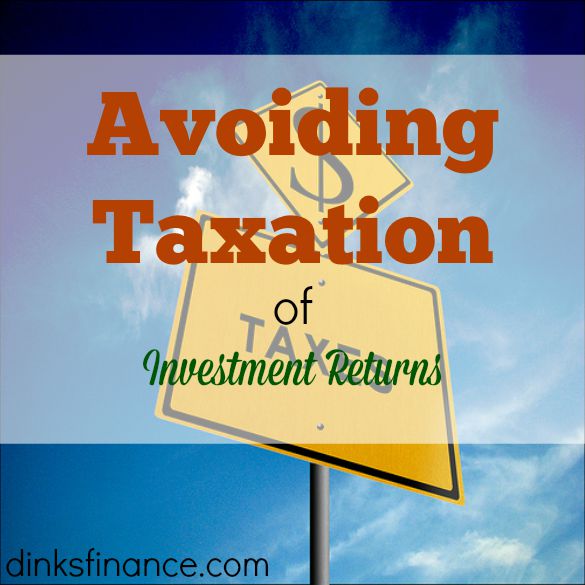Factoring in the effect of taxation on your goals and investment returns is essential if you are fortunate enough to directly own financial assets.
The need to minimize taxes is obvious if you think about it, but let me just spell it out for you. Let us assume you are an average American making $50,233 per year. Let’s also figure you’ve manged to scrape together $10,000 to invest. We can also take it for granted that you make your investment for 5 years in a conventional type of asset (such as bonds, stocks, a REIT, or some sort of direct position in real estate). If you are in the 25% tax bracket (which you are if your income is $50,233 and you file single on your taxes), then the cost of taxes on your investment returns looks something like this:
| Investment Type | Tax Rate | Return Before Taxes | Tax Adjusted Return | Difference on $10,000 Invested Over 5 Years |
| Bond Interest | 25% | 5% | 3.75% | $741.82 |
| REIT Dividends | 25% | 6% | 4.5% | $920.44 |
| Stock Dividends | 15% | 2% | 1.5% | $267.97 |
| Short- Term Capital Gains | 25% | 10% | 7.5% | $1,748.81 |
| Long-Term Capital Gains | 15% | 15% | 11.25% | $3,072.37 |
For most people taxes are going to take a big bite out of your investing returns – the hit gets bigger as your return increases and as the amount you invest gets bigger. Because of this, you probably want to think about some easy and legal ways to get your cash away from the IRS. What can you do to minimize investment taxation? There are a lot of ideas floating around on the web but they basically break down into three strategies:
1) Use Tax Sheltered Accounts: There has been a lot written about use of IRA’s, ROTH IRAs and 401k/403b, so we won’t say too much about these here. The bottom line is that there are lots of options for retail investors who want to legally get away from taxes. Pretty much, if you don’t have an IRA or a Roth IRA, get one. If you’re not contributing to your 401k/403b, do it before you mess around with a taxable account. Other options include looking into 529 college savings plans, or Coverdale education savings accounts.
Finally, in terms of gaming the tax shelter system, one additional trick that’s been going around is socking money into a regular IRA and then converting the regular IRA into a ROTH IRA. This is useful if you make too much income to qualify for a ROTH IRA. Since we’ve capped out of being able to invest in our ROTHs, we are looking more closely into this. We know it is feasible and legal, but will be doing more research to do a separate post on what the impact of having a mingled IRA account, comprising of both ROTH funds and non-ROTH investments.
2) Purchase Tax Advantaged Investments: This is a favorite trick of high net worth investors. They tend to buy a lot of tax free bonds, or buy into Master Limited Partnerships (MLPs). If you are unfamiliar with these, they trade like a regular stock, but they are taxed as return of capital, rather than as regular income. Another option is tax free mutual funds. Finally, it may be possible to structure more complicated real estate deals, such as buying your college age child a home.
3) Pay Attention to Tax Efficiency! For example, you might consider growth stocks instead of dividend stocks in your taxable accounts to minimize the amount of taxes you need to pay on your dividends. Alternatively, if you are going to purchase high yielding bonds or preferred stocks, consider shifting around your purchases and holding these in a tax sheltered account rather than a regular taxable account. This is because the higher yields on these types of assets mean the IRS’s pound of flesh is bigger.
Folks – lots of people find discussing taxes dull, but if the feds are going to take 15% to 25% of your investment capital, you’d darned well better pay attention. It’s probably going to be your single largest investing expense and can have a BIG impact on your investing returns.
Best,
James




Thanks for the post! I’m new to tax strategy.